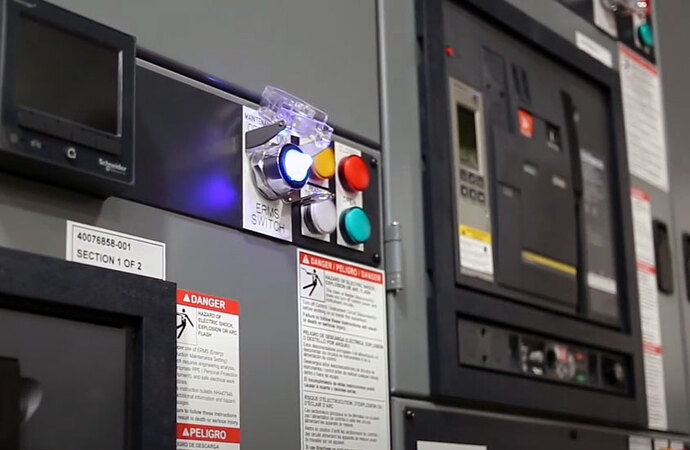The most effective maintenance program is one that prioritizes activities based on criticality of equipment, productivity, resources, and best practices in the industry. Photo: Square D.
Poor electrical maintenance is the leading cause of unplanned downtime, poor energy efficiency, and premature equipment failure. Millions of dollars are at risk to businesses each year as a result of lost production and equipment damage.
Insurance industry experts estimate the failure rate of electrical equipment is three times higher for components that are not part of a scheduled preventive maintenance program as compared with those that are. The specific type of maintenance program chosen will be based on several factors including reliability requirements the individual risk profile of the equipment to be maintained.
1.) Run-to-Failure
In the run-to-failure approach, electrical preventive maintenance is generally not performed. Equipment is only repaired or replaced when it experiences a catastrophic failure. The equipment is not subjected to any monitoring or performance evaluation as the risks associated with failure are accepted.
This approach is also known as “reactive maintenance” and is often applied to noncritical equipment and systems in the manufacturing sector. Run-to-failure can provide adequate reliability in small organizations where reduced liability and lack of dedicated maintenance staff exists.
2.) Maintain as Necessary
The next step up from the run-to-failure approach is called “maintain as necessary,” where electrical maintenance personnel inspect equipment on a less frequent basis, most often during normal working hours. This approach can catch failures in their early stages, allowing technicians to correct them before becoming a danger. Maintain as necessary is popular among industrial manufacturing plants as it provides satisfactory monitoring of performance to predict failures before they cause serious damage.
3.) Time-based Maintenance
Performing maintenance on fixed time schedules, also known as “scheduled PM,” is an approach where maintenance activities are performed at specific calendar intervals or operating cycles. The maintenance schedule and procedure is typically based on manufacturers’ published data or latest industry standards.
The time-based maintenance approach allows equipment owners to schedule the system outage at a time of their choosing rather than having to correct major problems resulting from equipment failure. This program will ensure that equipment gets periodic attention at regular intervals but may not follow the best industry practices or optimize the use of limited resources.
Scheduled PM is most often implemented where productivity and safety are a priority. NETA frequency of maintenance tests can help determine which tests to perform and how often based on the condition and reliability requirements of a given system.
4.) Predictive Maintenance
The most effective maintenance program is one that prioritizes activities based on criticality of equipment, productivity, resources, and best practices in the industry. The “predictive maintenance” strategy is an extension of the time-based maintenance strategy and uses non-destructive test methods to assess equipment condition. Also known as “condition-based maintenance,” this strategy uses planned maintenance tasks that are developed based on data collected from equipment operating history and trending analysis.
Trending of Test Results
A key element of any high-quality electrical maintenance program is the methodical trending of test results. Any arbitrary test can be a poor predictor of future failure, unless measurements fall grossly outside of an acceptable range, but values that are plotted over time can reveal a clear degradation that can be corrected well before signs of failure occur. Insulation resistance, leakage current, capacitance, insulation power factor, bearing temperature, vibration, and winding temperature are several examples of maintenance data that can be monitored over time.
Degrading trends can spot trouble before they become a serious problem, accelerating trends indicate imminent failure. The trending program must account for external factors that affect the measured result and only compare measurements that have been temperature corrected to a base value. Test procedures should be clearly written to ensure practices remain identical from test to test (such as test lead placement and which operating conditions to document).
Further Reading
- The 3 Main Methods of Electrical Testing
- Recommended maintenance practices for electrical distribution system equipment
- How to build an electrical maintenance program
- Electrical Power Equipment Maintenance and Testing - Paul Gill

